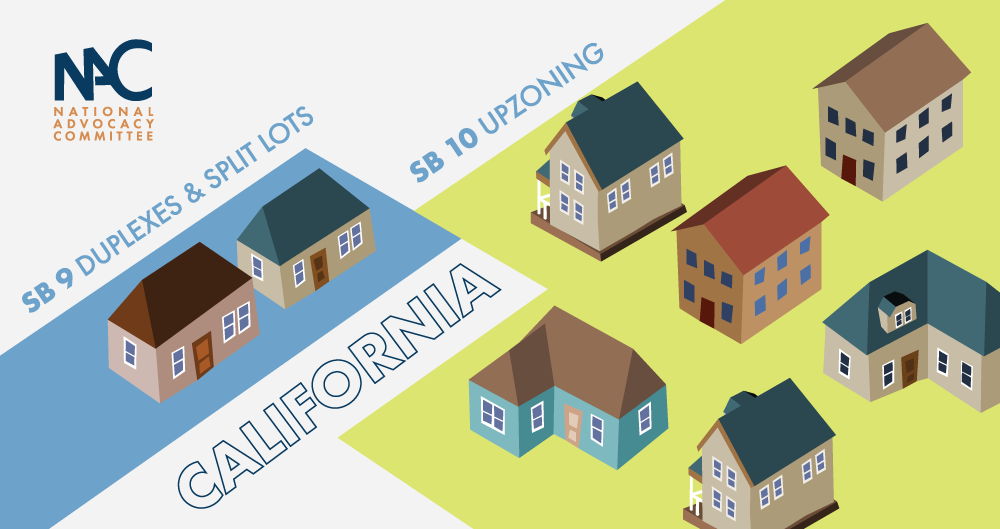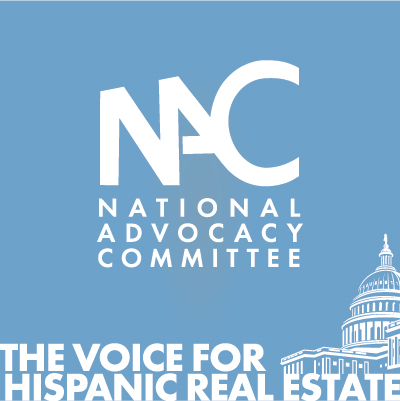Major housing supply bills pass in California
Celebrating NAHREP familia, cultura, politics, and grassroots action
September 2, 2021
Qué onda mi gente?!
Bienvenidos a Septiembre, Labor Day, Hispanic Heritage Month, and of course: NAHREP at L’ATTITUDE. I hope you are getting excited, because I certainly am! If you haven’t registered yet for NAHREP at L’ATTITIDE, you can do so here.
In other news, we had some big housing inventory victories in California! For the past two years, the NAHREP California Delegation has been working very hard to pass several state-wide housing bills that would address the housing inventory shortage. We organized, we met with legislators, we made phone calls, we wrote letters and op-eds, we met with more legislators, and guess what… We did it!
Two major housing inventory bills passed the state legislature, both of which are certainly a huge step in the right direction. Advocacy WORKs, and it is more important than ever that we are not only involved in the conversation but leading it. Here is a recap of what happened.

Senate Bill 9 and Senate Bill 10 Pass in California
Earlier this year, Senate President pro Tempore Toni G. Atkins released the Senate Housing Package, a package of 11 separate bills to address the housing inventory crisis in California. In January, NAHREP participated in our very first state-wide day of action where our chapters met virtually with legislators in Sacramento to advocate on behalf of these bills.
Senate Bill 9: The California Housing Opportunity and More Efficiency (HOME) Act
SB 9 allows for two very specific things: duplexes and lot splitting. Prior to SB 9 passing, it was illegal to build more than one unit on any lot zoned for single-family housing, which was 70 percent of the state’s residential zones. Additionally, homeowners were not allowed to split their lot into two separate parcels, even if there was a separate structure, such as an Accessory Dwelling Unit (ADU) or second unit, preexisting on the lot.
- Lot-splitting: With the passage of SB 9, existing homeowners will have the option to sell a portion of their lot for the first time. Many homeowners own homes on larger lots, much of which is being unused. Now, if they want to, they have the flexibility to divide and sell part of their land, as long as it’s not less than 40% of the original lot.
- Duplexes: Most homeowners in California will now be able to build two homes on each single-family lot, essentially duplexes. This, coupled with the ability to split a larger lot, in effect legalizes up to fourplexes in areas that previously would have allowed only one home.
How will this help solve the housing crisis?
The U.C. Berkley Terner Center for Housing Innovation found that SB 9 could enable the creation of over 700,000 new homes. While the actual number of new homes built will largely depend on market conditions and whether or not homeowners’ even realize they can now do this, the Terner Center found that SB 9 has the potential to expand the supply of smaller-scaled housing in higher-resourced, existing single-family neighborhoods.
What about neighborhood protections?
Critics of SB 9 have voiced concerns about neighborhood character changes, a loss of local control, and displacement. In order to combat some of these concerns, SB 9 hosts a series of protections that NAHREP believes strike the right balance.
- Benefits are meant for homeowners, not investors. Prior to getting approval for a lot split, SB 9 requires that the homeowner lives in one of the units for a minimum of three years. The same individual also can’t split parcels that are next to each other. That means that investors can’t buy up a bunch of single-family homes in one neighborhood to split and build on.
- Existing renters are protected from displacement. Properties where a tenant has lived in the property for three years are excluded. Additionally, the lot split cannot require the demolition of a housing unit serving moderate-, low-or very low-income households or a rent-controlled unit.
- Environmentally and historically sensitive neighborhoods are protected. New development in high fire hazard areas, historic districts, and non-urbanized areas are also excluded, protecting areas that may be environmentally or historically sensitive. Additionally, new construction must match existing height and scale, have yards, and will meet local design standards.
SB 10: Local Control for Increased Housing Density
SB 10 allows cities to zone for smaller, lower-cost housing developments of up to 10 units. Existing law makes it difficult for local governments to zone for smaller, less expensive housing. SB 10 excludes these smaller zoning changes from being considered a project for purposes of the California Environmental Quality Act (CEQA), as long as they are in urban areas, near high-quality public transit, or job centers – essentially streamlining these projects and making building new housing faster and less expensive.
- Upzoning: Authorizes local governments to zone for up to ten homes per parcel in transit-rich areas or urban infill sites.
- Streamlining: Protects local governments from legal delays and other obstacles.
- Smaller homes: Enables cities to zone for smaller, naturally lower-cost housing that is affordable for essential workers and low- and moderate-income residents.
How will this help solve the housing crisis?
SB 10 will allow cities to bypass CEQA in certain areas to allow for rezoning of up to 10 units, speeding up development by several years. The process of getting project approval under CEQA is incredibly time-consuming and expensive, causing years of delay and hundreds of thousands of dollars in additional fees. Without SB 10, smaller, lower-cost developments often wouldn’t get built at all.
What about neighborhood protections?
Local cities and governments have complete control over what areas get rezoned under SB 10. The bill doesn’t require cities to do anything, it simply allows for upzoning if the city so chooses.
What about outside of California?
Housing experts believe that one of the most effective ways to address our housing inventory shortages is to end single-family zoning or laws that prevent more than one unit (door) from being built in one lot. Oregon is currently the only state to pass a state-level ban on single-family zoning.
What other states are thinking of doing something similar? So far Montana, New Hampshire, Connecticut, and North Carolina have all considered bills to reform local zoning. Zoning has historically been regarded as a local issue, the problem is that cities and localities have failed to act. We need to do more if we are going to solve our housing inventory crisis. And that might mean putting some pressure on state governments.
Nos vemos pronto!!!!

About Noerena Limón
Noerena Limón is NAHREP’s Executive Vice President of Public Policy and Industry Relations. Noerena heads the organization’s policy and advocacy efforts on issues ranging from homeownership, housing inventory, credit access and immigration.
Prior to joining NAHREP, Noerena spent six years at the Consumer Financial Protection Bureau (CFPB) and served as a political appointee under President Obama in the White House Office of Political Affairs.



